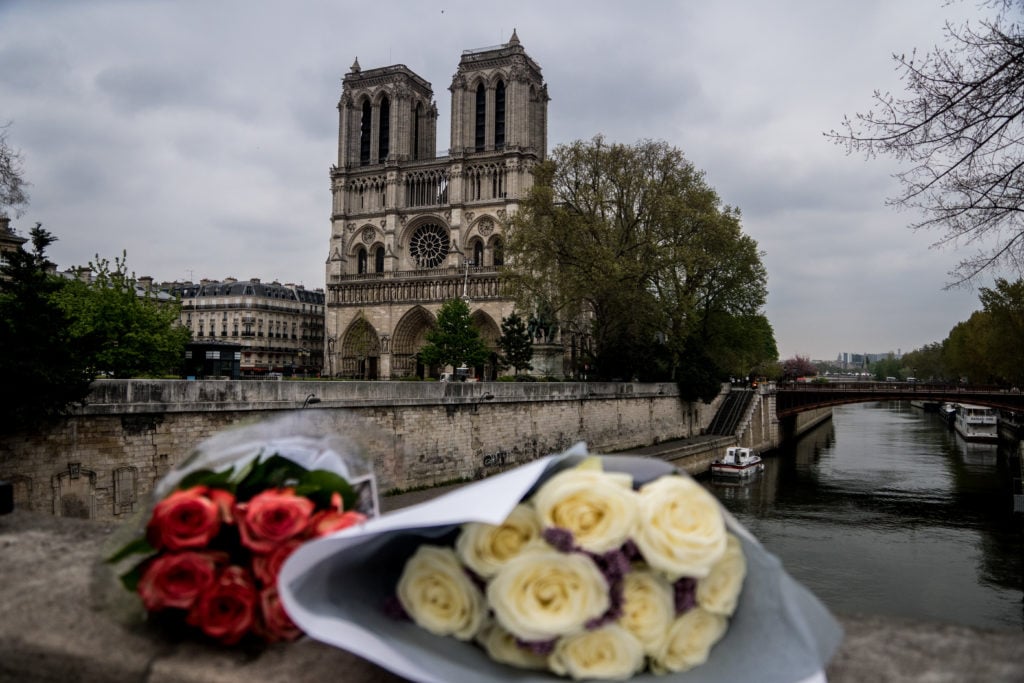Politics
Artists Wanted an Experimental New Spire for Notre Dame. The French Senate Has Now Made Sure That Will Never Happen
The Senate has stipulated that the fire-ravaged cathedral must be restored "exactly as it was."

The Senate has stipulated that the fire-ravaged cathedral must be restored "exactly as it was."

Julia Halperin

A 300-foot-tall flame sculpture, a shooting beam of light, and a tower that resembles a spaceship are among the outlandish proposals put forth by architects to replace Notre Dame’s legendary spire, which collapsed during the cathedral’s devastating fire in April. But, in the end, none of these architectural follies is likely to become reality. On Monday, the French Senate voted that the cathedral must be restored to resemble as closely as possible its appearance before the blaze.
The decision comes amid fierce debate in France over the best course of action to restore the building. Two days after the fire, France’s Prime Minster Édouard Philippe said he would launch an international architectural competition to reconstruct the spire. (The original spire was built in the 13th century, but was recreated in the 19th century by architect Eugène Viollet-le-Duc. That version, now destroyed, was made of oak covered with lead.
It did not take long for the reconstruction to become a symbol of a larger battle in France between those who seek to preserve traditions and those who want it to modernize. France’s President Emmanuel Macron said he was not opposed to a “a contemporary architectural gesture” that could make Notre Dame “even more beautiful.”
Over the past month and a half, dozens of artists and architects have pledged to enter the contest, including the Belgian conceptual artist Wim Delvoye and the UK architecture firm Foster + Partners. Among the dozens of proposals, some involved transforming the roof into public green space or even replacing the entire roof with stained glass.
The senate’s guideline for a traditional spire was added to a larger bill governing the proposed restoration, which had previously been passed by French parliament. The new bill also controversially states that the restoration aims to be complete by 2024, in time for the Paris Olympic Games. That deadline, first proposed by Macron, has been criticized by experts, historians, and conservationists who say it is unsafe to rush such a complex project. (Last month, around 1,600 curators, conservators, architects, and other experts—including the former Met director Philippe de Montebello—signed an open letter in Le Figaro warning against a hasty restoration.)
The French senate also removed a clause from the bill that would have given the government power to override regulations on environmental and heritage laws that traditionally govern construction projects in order to speed up the process. Finally, the bill proposes the creation of a new agency under the auspices of France’s Ministry of Culture tasked with overseeing the project.
The revised bill will now be sent back to parliament so the two bodies can come to an agreement before passing it into law.
Additional reporting by Katie White